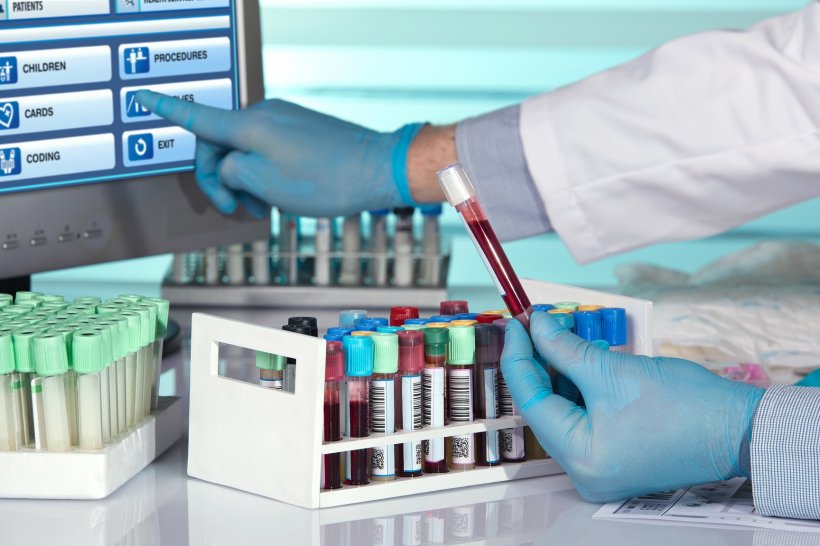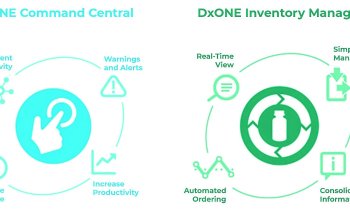
Source: Shutterstock/Gorodenkoff
Article • Lab shopping list
Marry (a LIS) in haste, repent at leisure
Buying a laboratory information system (LIS) means entering a long-term relationship with a software vendor. The selection criteria are many, but which, ask Markus Neumann, Harald Maier and Gabriele Egert, are just fashionable and which might be underestimated?
The decision to buy a LIS – i.e. to form a relationship with one or more software vendors – is based on a slew of criteria, and excitement occurs over a long-term relationship. However, years pass before quality can be assessed. Hard economic, technical and functional criteria can easily be expressed in figures, whilst others are ‘soft’ and difficult to quantify; however, they should provide sound information to shape quality in vendor/user cooperation. A purchasing decision results from balancing hard and soft factors.
Specifications
The basis of a specifications document to be provided to bidders for the tender is what’s required. If there is no in-house IT specialist, use of an IT consulting firm might be advisable. The checklist offers an initial overview of topics to be covered. Vendors invited to submit a quotation need careful selection. Vendor criteria e.g. financial position, years of continuous market activity and responsibility/accountability. Visits to reference labs and information exchange with users can offer important insights. Beware: although criteria are important, they are no guarantee that software development will continue.
Technical criteria
Hard data concern software, hardware and database structure. Which operating systems, programming languages and web technologies will be used? How does the database perform under heavy workload? An important question is user autonomy. Can you customise parameters, e.g. database queries? What training is included; what cost? Finally, physical interfaces support must be ascertained: Are popular interface protocols, e.g. HL7/IHE or ASTM, used and how are they practically integrated within the lab instruments? For vendors, programming customised device interfaces is a core business; over years this can amount to several thousand euros per analyser – a significant position in the budget. Interfaces are also relevant in background processes, such as billing and controlling, or external communication with physicians to exchange order data and results.
Functional criteria
One stop shopping is no longer the guiding principle
Every vendor offers many modules listed in the table under ‘Functionality’. However, it makes sense to look at procedures and review their control by master data and parameters. Nowadays, many lab workflows must meet certain standards. Quality management standards, or ISO 15189, 17025, or even ISO 22870 for POCT, are pretty obvious; others, such as GMP for blood donations, or for own blood donations, are less well known.
Generally, the trend is towards process monitoring. If a lab has standard operating procedures (SOPs) they can visualise the specific workflow of core processes to ensure relevant standards are met. Laboratorians should have easy access to quick visual overviews of processes, e.g. on a process monitor.
Data protection is a major challenge. Many people with widely differing training and task levels can be involved in processes, so access to sensitive data in a central lab and at POCT sites must be clearly defined. Thus a detailed data security concept is an integral component of any LIS offer. One aspect to address is the use of legacy data, since a new LIS concept usually involves replacing an old system. One stop shopping is no longer the guiding principle. For some functions, software is better sourced from a specialist, e.g. for document management and document control programs that simplify tasks for quality managers.

Source: Shutterstock/angellodeco
Economic criteria
Cost is among the easier factors to define. Even when the exact LIS implementation and operating costs cannot be specifically determined pre-installation, an estimate is possible and necessary since tenders with a €209,000 amount, spread over five-year period, must be published Europe-wide. Costs to consider include licencing fees, e.g. for database or execution environment; for software implementation and customisation and for a support/maintenance contract; plus, obviously, for hardware, e.g. computers/printers. In this context, decide which services can be provided in-house, either by the lab or hospital, and which existing ones can be used. New purchasing can bring the opportunity to part with obsolete technology. Software and hardware installation could be done by an in-house IT team; so could training during the implementation phase, again reducing costs. All staff needs training when an electronic order entry system is implemented; however, training could take thousands of hours, so only key users should be trained by the software firm.
Conclusion
Purchasing a new LIS is a huge challenge, but is also an opportunity to examine all processes, weed out inefficiencies and update tried and tested workflows. A good LIS vendor is a partner for life – in prosperity and adversity.
Checklist for a LIS selection | ||
|---|---|---|
| Feature | Explanation | |
| Company | Size, financial position | Number of permanent and freelance staff, revenue, core business |
| Continuity, accountability/responsibility | Type of company, year of incorporation, guarantees, ISO certification | |
| Reference customers | Number, size, scope, reputation | |
| Customer testimonials | Adherence to deadlines and delivery schedules, keeping promises, staff commitment, cooperation with instrument manufacturers, LIS and HIS | |
| Soft skills | Personality and competence of vendor’s staff during conversation | |
| Implementation concept | Is it comprehensible? Volume, solution visualisation | |
| Service | Hotline, response time, specialist availability | |
| Training | Documents, online support, on-site training, seminars | |
| Product | Architecture | Client-server architecture, periphery, central master data server |
| Hardware | Central computer, PC network, terminals, printers, storage space, operating system | |
| Software | Data base, data protection/privacy concept and confirmations, use of standard software, customisation of parameters (by user) | |
| Response time | Depending on database volume, number of web connections and online users (particularly in multi-site facilities) | |
| Maintenance contracts | Type and scope, hardware, software, remote access | |
| License policy | Online devices, database, multiple installations (campus license), pay-per-use (instead of purchase) | |
| Functionality | Modules | Clinical chemistry, microbiology, blood bank, pathology, billing, order entry, automation and control |
| Data protection/privacy concept | Permission-based, controlling access to patient data (e.g. lab values) | |
| Tracking | Search and sort functions, order status and sample tracking | |
| Compliance | RiLi-BÄK (in Germany), ISO 15189, ISO 17025, ISO 22870, GMP, etc. | |
| Master data management | Data maintenance, parameters, copying, use of legacy data, across modules | |
| Order entry and capturing results | Keyboard, card reader, order entry, material ID, different bar codes, device interfaces | |
| Quality control | RiLi-BÄK (Germany), Westgard, other quality systems, visualisation | |
| Technical and medical validation | Auto-validation, rules, alarms, automated repeat measurements, visualisation | |
| Reading | Sort criteria for orders and lab, rules systems, ICD codes, footnotes in identical texts | |
| Billing | Multi-client capability, service portfolio, accrued accounts | |
| Archiving | Procedure, duration, access, reactivation, archiving of image data | |
| Statistics | Saved and spontaneous queries, SQL assistant, export to standard software | |
| Integration | Configurability | Adaptation of software and user screens to the on-site situation |
| Internal communication | Link to HIS and departments/wards, POCT devices, de-central printers, standard interfaces can be configured (HL7, IHE, LDT, ASTM) | |
| External communication | Link to other hospitals, specialist physician labs, lab groups | |
| Hardware | Use of existing printers, scanners, PC, receipt readers | |
| Existing data | Use of legacy data, retaining identification logic | |
| Results | Costs | Acquisition costs incl. commissioning, database, operating costs |
| Own contributions | Which contributions are required (configuration, AP computer, preparation of hardware and server), database license, training by in-house staff | |
| Costs over five-year period | These indicate whether a Europe-wide tender is required | |
Contact: Markus Neumann: markus.neumann@labcore.de
The article was first published in Trillium Diagnostik 2018.
01.09.2018











